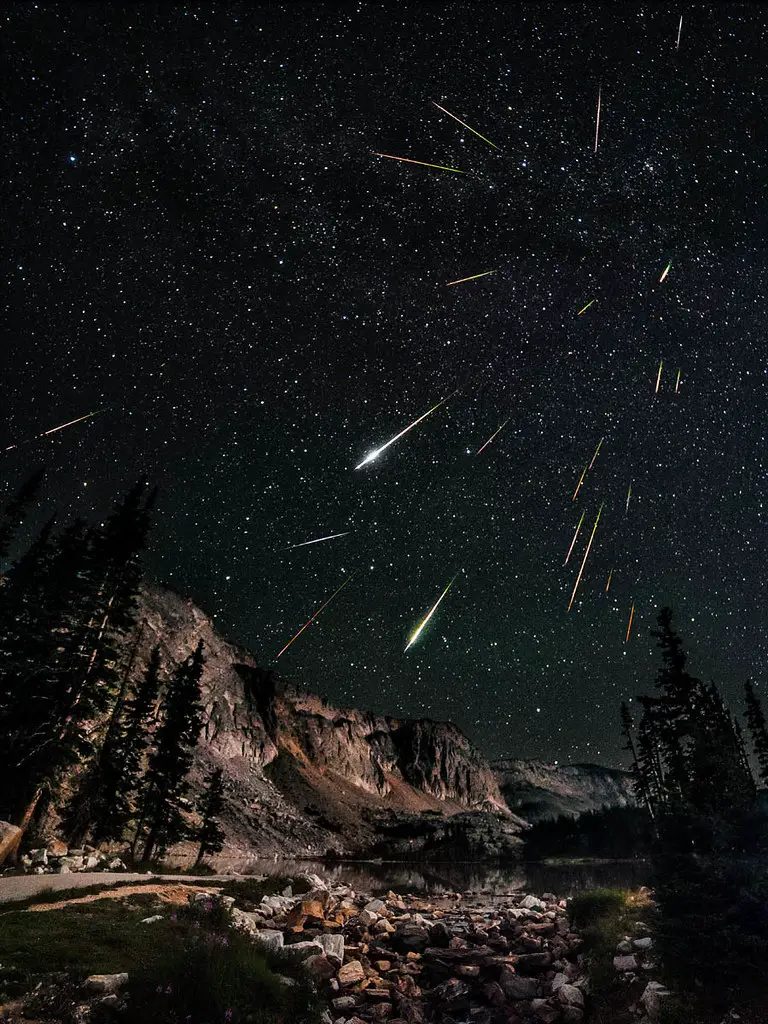Meteors, often known as shooting stars or falling stars, are a frequent occurrence in the night sky here in the United States. These fleeting flashes of light are created by fragments of space debris, such as pebbles or dust, that are so minuscule that they catch fire upon entering the atmosphere of the Earth. But how many meteors actually collide with Earth on a daily basis? We are going to investigate this subject and provide some insights on the frequency of meteor impacts on our planet throughout the course of this essay.
What precisely is a meteor?
It is necessary to have a solid understanding of what a meteor is before we can go into the subject of how many meteors strike the Earth on a daily basis. Meteors are caused when tiny pebbles or pieces of debris, which are normally no bigger than a grain of sand, enter the atmosphere of the Earth at extremely high speeds. They generate a dazzling swath of light in the sky as they pass through the atmosphere, where they heat up as they do so. Although the vast majority of meteors disintegrate entirely before they reach the surface of the Earth, larger meteors occasionally make it through the scorching voyage intact and are able to make impact with the ground.
How Many Meteors Are Expected to Strike the Earth Each Day?
The vast majority of meteor strikes happen during the day, when humans are unable to see them, making it difficult to provide an accurate estimate of the number of meteors that strike the Earth each day. However, based on observations of the night sky, scientists have devised methods that can provide an estimate of the number of meteors that collide with Earth each year. It is claimed that around 48.5 tons of meteoritic debris rains down on Earth each and every day. These numbers come from several sources.
Although this may seem like a significant amount, it is essential to keep in mind that the vast majority of this material is in the form of dust and other minute particles that are totally consumed by the atmosphere and never make it to the earth below. In point of fact, scientists believe that only five to ten meteorites with a mass greater than ten grams really make it to the surface of the Earth each year. These impacts are typically one-off occurrences that very infrequently result in any harm or damage to either people or property.
Why is it Important That Meteors Make Impacts?
Even though the number of meteor strikes that occur on Earth each day is very low, those that do take place have the potential to have tremendous repercussions. It is possible for large meteor strikes to wreak widespread destruction, and these types of impacts have been responsible for some of the most devastating catastrophes in the history of Earth. The most well-known instance of this is the impact that took place about 65 million years ago, which is thought to have been the primary factor in the extinction of the dinosaurs as well as a great number of other species.
In addition to the possibility of catastrophic impacts, meteor impacts play a significant role in altering the surface of the Earth and contributing to the evolution of life on our planet. This is in addition to the potential for catastrophic impacts. For instance, it is believed that the impact that resulted in the formation of the Chicxulub crater in Mexico had a significant influence on the climate of the Earth and, as a result, the development of life on the planet.
Conclusion
Even though the number of meteors that collide with Earth on a daily basis is very low, the impact of these collisions, when they do take place, can have tremendous repercussions. It is crucial, not only for scientific inquiry but also for the protection of our planet from potential dangers, to have a good understanding of the frequency and type of meteor impacts. The history of our planet, its evolution, and its place in the universe can be better understood through the investigation of meteorites and the effects of those meteorites on Earth.
![]()
